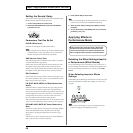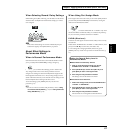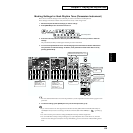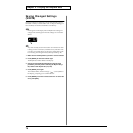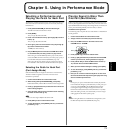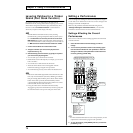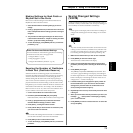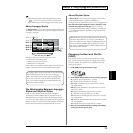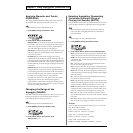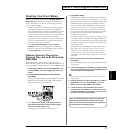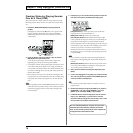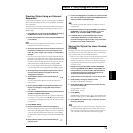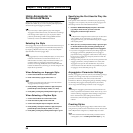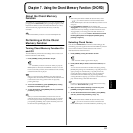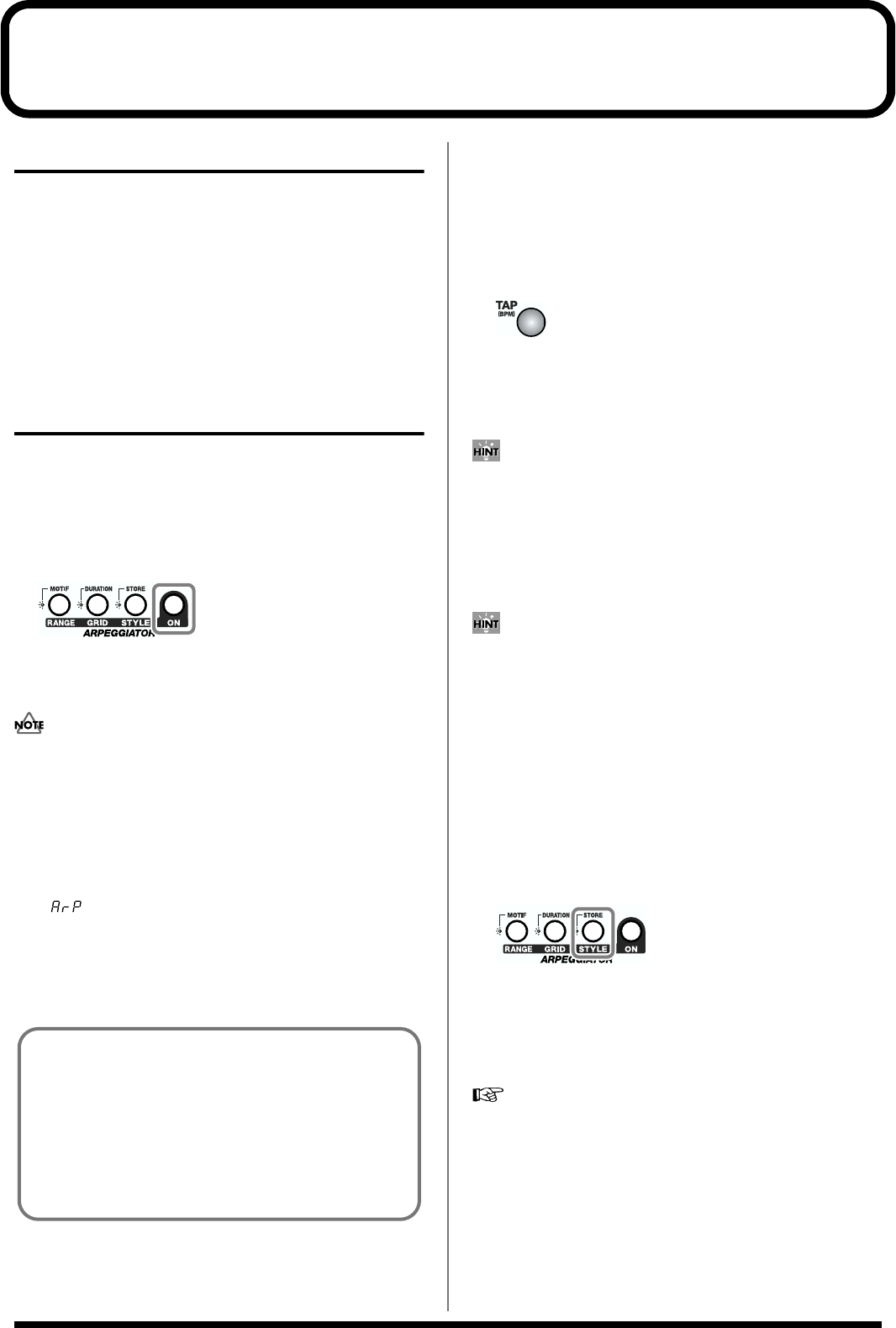
74
Chapter 6. Using Arpeggiator (ARPEGGIATOR)
About Arpeggiator
The SH-32’s Arpeggiator function lets you perform arpeggios
(chords in which notes are played in succession, one note at a time)
just by playing the chords, using the notes in the chords you play.
Not only can you use the factory-set Arpeggio Styles, which
determine the way the arpeggio is played, but you can also freely
rewrite Styles and enjoy performing your own original arpeggios.
Furthermore, you can also play rhythm patterns when you have a
Rhythm Set selected. What’s more, you can perform in ensemble
using these arpeggios and rhythm patterns in Performance mode.
Playing Arpeggios
Turning Arpeggiator On and Off
You can save the Arpeggiator On/Off settings individually in each
Patch, Rhythm Set, or Performance.
1. Press ARPEGGIATOR [ON], causing the indicator to light.
fig.06-01
When the Arpeggiator is turned on, you can then perform
arpeggios by playing a MIDI keyboard connected to the MIDI IN
connector or by using the Preview function (note-entry).
If nothing is recorded to the Arpeggio Style selected at this time,
then no sound will be played.
2. To turn off the Arpeggiator, press [ON] once more, causing
the indicator light to go off.
3. To save the settings, press [WRITE] and carry out the write
procedure (p. 63, p. 70, p. 73).
• When the System function FOOT SW (Foot Switch) is set to
“ ”, you can then use the foot switch connected to the
FOOT SWITCH jack to turn the Arpeggiator on and off (p. 91).
• By holding the Preview function, you can have arpeggios
continue to play even without having to hold down the SH-32’s
note-entry buttons (p. 21).
Determining the Tempo for
Arpeggio Performances
This sets the Arpeggiator tempo. You can save the Arpeggiator
tempo settings individually in each Patch, Rhythm Set, or
Performance.
1. Press [TAP (BPM)], causing the indicator to light.
fig.06-02
The current tempo value appears in the display.
2. Press [VALUE ▼/▲] to set the tempo value (20–250), or set
the value by tapping [TAP (BPM)] a number of times with the
same rhythm (Tap Tempo).
By holding down [EXIT] and pressing [VALUE ▼/▲], you can
set the tempo value down to the first decimal place.
3. When you have finished making the setting, press [EXIT],
causing the [TAP (BPM)] indicator to go off.
4. To save the settings, press [WRITE] and carry out the write
procedure (p. 63, p. 70, p. 73).
You can synchronize the tempo of the arpeggio performance to
the tempo of an external MIDI device. For details, refer to
“Synchronizing Arpeggiator and the LFO to an External MIDI
Device” (p. 88).
Selecting Styles for Arpeggio
Performances (STYLE)
This selects the arpeggio’s basic performance Style. You can save
selected Style numbers separately to each Patch, Rhythm Set, or
Performance.
1. Press [STYLE], causing the indicator to light.
fig.06-03
The arpeggio’s Style number appears in the display.
2. Press [VALUE ▼/▲] to select a Style number (11.a–88.a).
You can also select Style numbers directly by pressing [BANK]
and pressing one of the buttons [1/A]–[8/R], then once again
pressing one of the buttons [1/A]–[8/R].
For more on the prepared Arpeggio Styles already programmed
in the SH-32, refer to the “Arpeggio Style List” (p. 102).
3. When you have finished selecting a Style, press [EXIT],
causing the [STYLE] indicator to go off.
4. To save the settings, press [WRITE] and carry out the write
procedure (p. 63, p. 70, p. 73).
Using in Combination with the Chord
Memory Function
When performing with the Arpeggiator, you can also use it
along with the Chord Memory function (p. 81). After first
storing complex Chord Forms in memory, you can then call
them up when Arpeggiator is on, and you can easily create
complex arpeggio sounds just by pressing a single key (or one
note-entry button).



